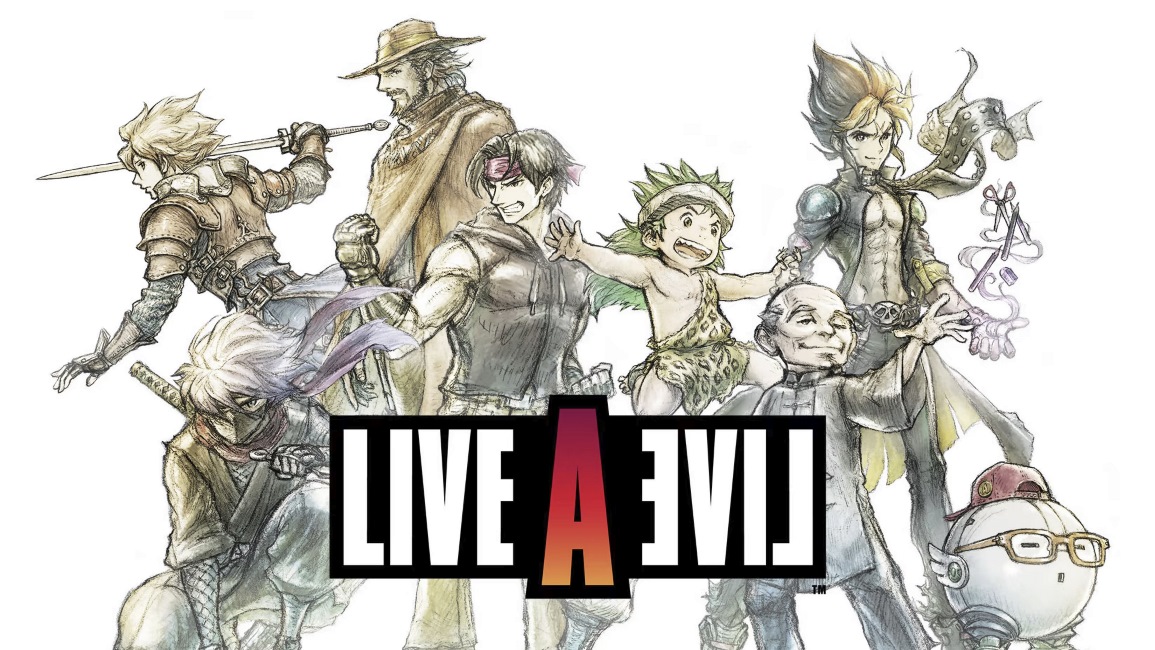Live A Live was originally released in 1994, the same year as the classic Final Fantasy VI, Secret of Mana and pre-dating Chrono Trigger by a year. The game was rubbing shoulders with some now-household names, but I assume due to its limited release the game only ever had a cult following. That is until Octopath Traveler came along, boasting a fresh HD-2D visual style, blending the retro with modern graphics and quickly becoming a fan favourite, especially after its recent sequel.
Octopath Traveler’s successful approach of an old-school spin on the modern landscape of RPGS made SE’s President – Yosuke Matsuda – put Live A Live at the top of the list to receive the same HD-2D treatment in the form of a remake. It’s befitting as the game’s bones were way ahead of its time. Like Octopath, Live A Live follows a similar structure of playing through multiple vignettes of characters. The original design philosophy was to experience multiple lives in the same game – breaking out of the epic narrative arcs of Final Fantasy. But is this the grandfather clock of time-spanning tales? Or a remnant of the past? Let’s get into it.
Attack on the Future
As I previously mentioned, you play through eight different characters. They span from prehistoric times right through to the distant future. You can choose whichever character you want to start with, meaning there isn’t necessarily a correct way to play through. I went chronologically starting from the prehistoric chapter, and whilst I don’t think it was a bad choice, it created an unfavourable pacing.
This is because not all chapters are created equal. Each chapter has one of three focuses: Story, Puzzles or Fighting. You’ll have a sprinkle of each with every character, but depending on the focus they will greatly differ in time to complete.
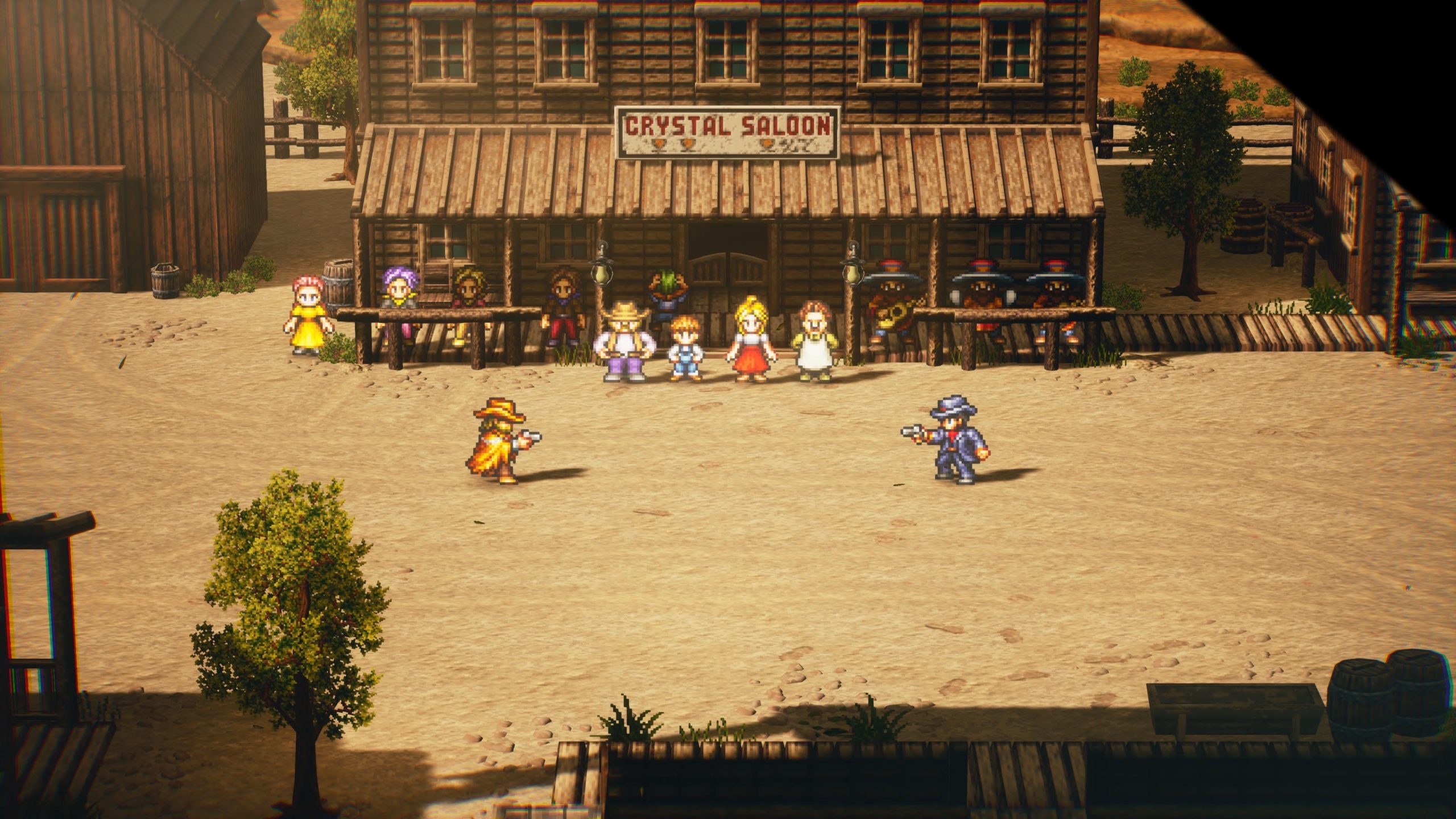
The quickest chapter I beat was around an hour and a half, whilst the longest could keep you for 4 hours. My experience was front-loaded with the shorter chapters making my later game feel long, I can’t fault it fully as it was my choice in selection, but a consistent pacing regardless of direction would have made for an overall smoother story.
Don’t be put off if certain scenarios don’t take your fancy, I have to preface that by the end of the game, I absolutely fell in love with the story. In broad strokes, the chapters on their own are always a case of good vs bad and it’s very by the numbers. However, the heart poured into each character and the concluding chapters tie all the lives together in an incredibly satisfying way. I’ll break down some of the contents of the chapters when I talk about the gameplay, as the story is something to try and go into as blind as possible to enjoy it.
…We’ll Do It Live
Seemingly innocuous, each chapter comes with its own gimmick. I say seemingly because, in my first chapter (prehistoric), the caveman protagonist Pogo’s power was to sniff out enemies. One push of square and Pogo will sniff, bringing up dustballs to enter in battles to hunt for food. It was a fun time, the characters in this chapter don’t speak so all of the storytelling is filled with slapstick comedy. It was almost a false start to what I was getting myself into as I had no idea what was to come when I reached Edo Japan.
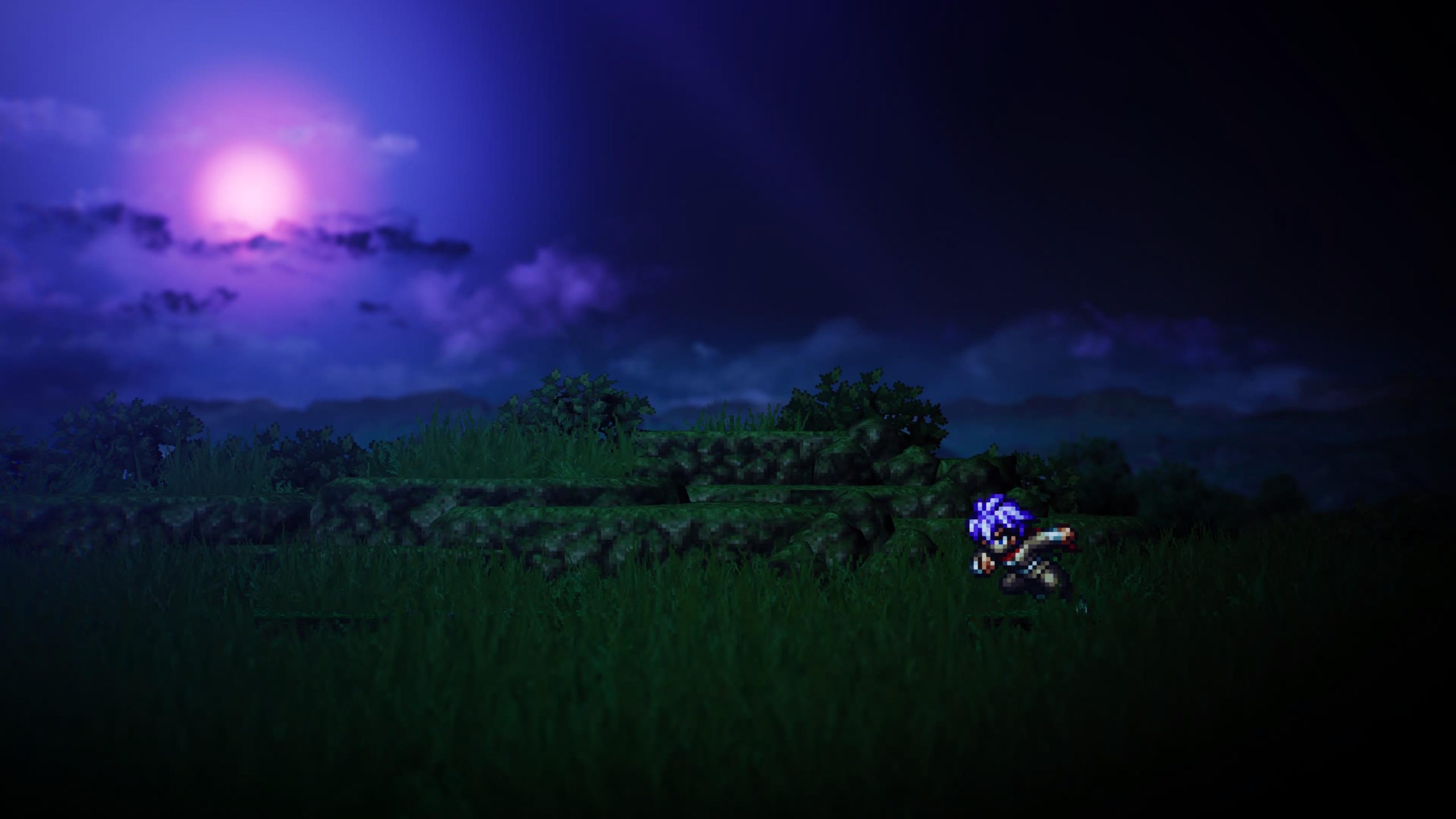
During this chapter, my main character is a Shinobi. I stuck with the default name but you can choose your own. In the Edo Japan chapter, you’re tasked to infiltrate a castle being ruled by a tyrant and stop them from their evil doings. The Shinobi’s power is become one with the shadows, and disappear. You’ll hold square to vanish but you won’t be able to move in this state, creating a back and forth dodging enemies throughout.
It felt harmless at first, but when I killed my first human enemy a kill count came up on my screen. This is when I understood there were consequences and instead of slaughtering my way through, I reloaded my save and did my best Tenchu impression; turning an endless battler into a stealth puzzler. My efforts of persevering through a pacifist run awarded me a strong weapon I wouldn’t have earned otherwise.
It was a true watershed moment as there are many examples throughout each chapters where your choices don’t necessarily have game changing differences, but noticeable in a gratifying way – making my playthrough feel like my own.
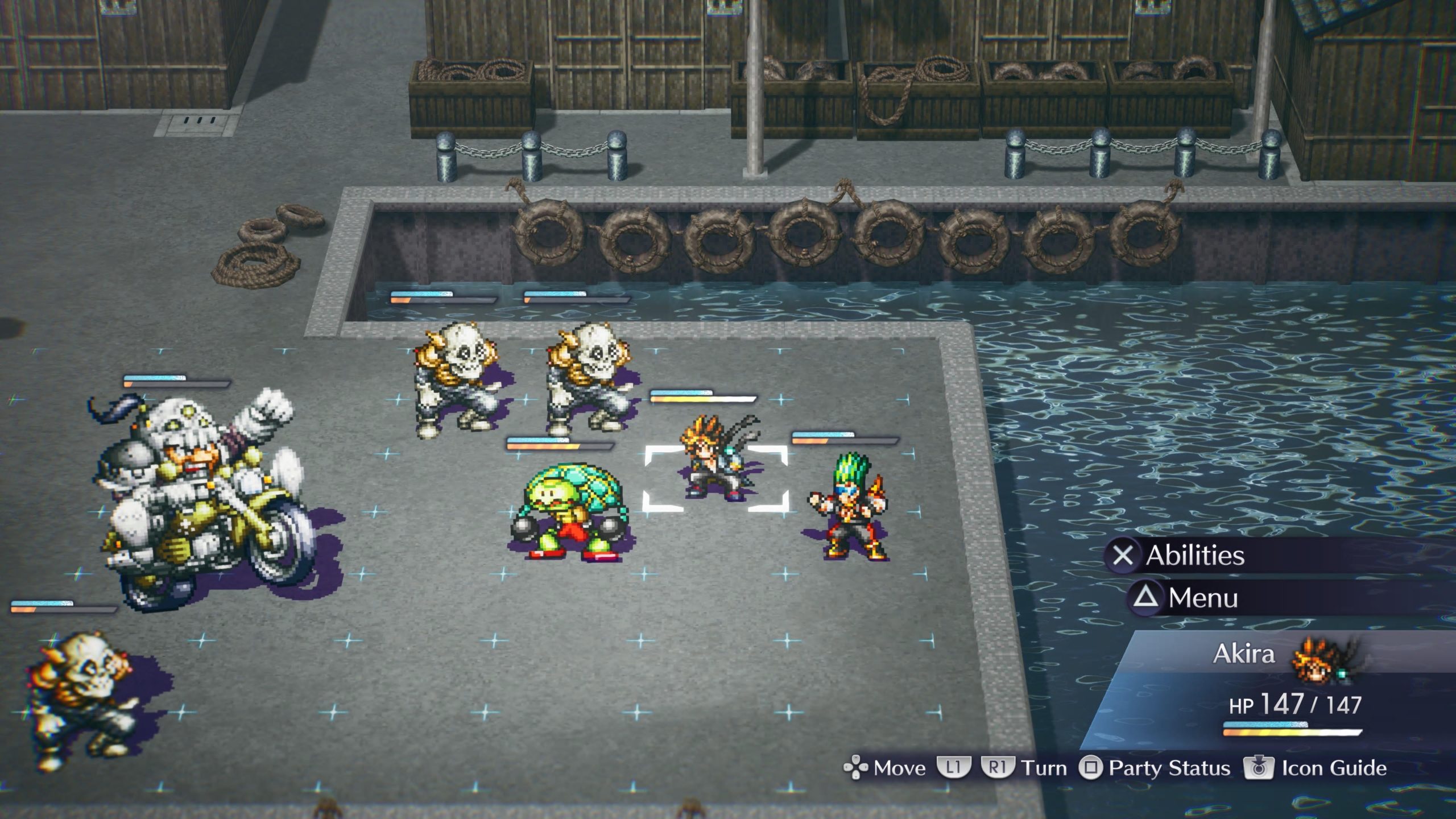
Turnt Based RPG
Whilst Live A Live spans across millenniums, the basics of the game are the same. Combat is turn-based in a grid format. Both you and your enemies have a HP and Action Bar. Each move across the grid fills up the action bar as well as filling automatically for everyone per turn. Once full you can attack from your abilities menu, use an item, pass, wait or flee.
Each attack has its own style of damage. This varies from physical to special, each having its own subsection of type. Fist, kick, fire, wind – it’s all things you’ve seen before if you’ve played RPGs and each enemy has their own resistances and weaknesses.
It’s the most consistent element of the game as it’s the same framework across all characters. However, for the most part, fights were chalked up to out-DPSing my adversary as opposed to thinking tactically to win my fights. For me personally, this wasn’t much of a problem. I enjoy a vast array of RPGs, but I’ve never been one to persevere in the genre if there’s any sign of resistance during combat.
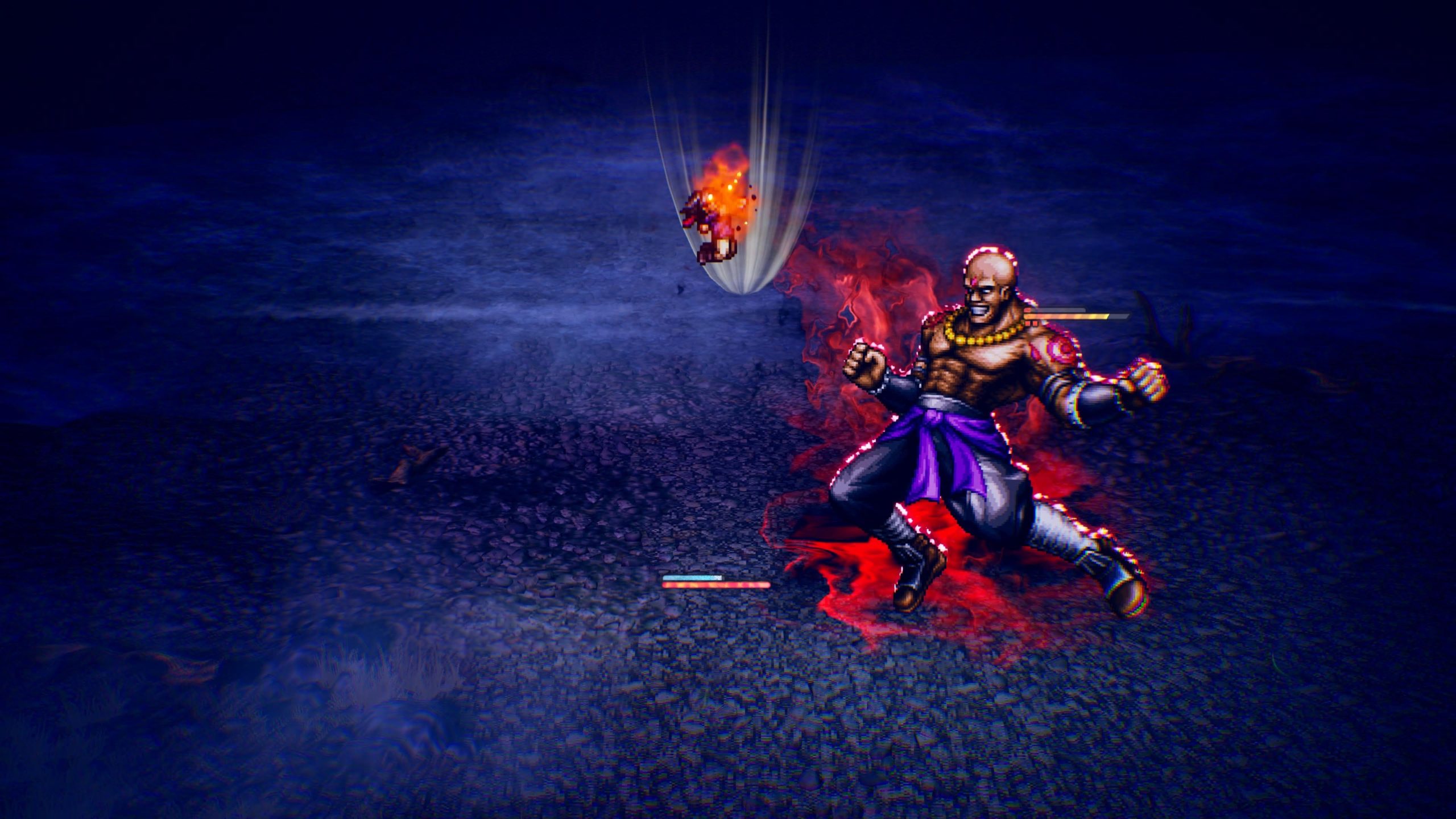
Keep in mind it’s a 30-year-old game, so it might not be intricate, but the visual flare on the majority of the attacks – especially the late-game specials – are exhilarating, it never got old playing as Present Day Masaru launching in the air and smashing the ground with the rubble doing AOE damage.
This simplification of combat pairs with the equipment you find across the chapters. I usually just found myself clicking whatever equipment came with the bigger numbers. Some RPG purists might miss the joy of min-maxing their crew compositions during the initial chapters. That’s not to say you can’t do that, but I found myself not needing to pay any attention to what I equipped.
In Another Life
Outside of the epic boss battles and random combat encounters, you’ll be traversing through a breadth of environments. From an isometric perspective, you’re guided by your minimap to take you from A to B. You won’t necessarily be doing a massive amount of exploring across all the chapters, and some are more streamlined than others. For instance, the castle you infiltrate in Edo Japan is a dizzying labyrinth filled with traps, chests and enemies to face-off. There’s nothing telling you where to go so exploring is some of the charm.
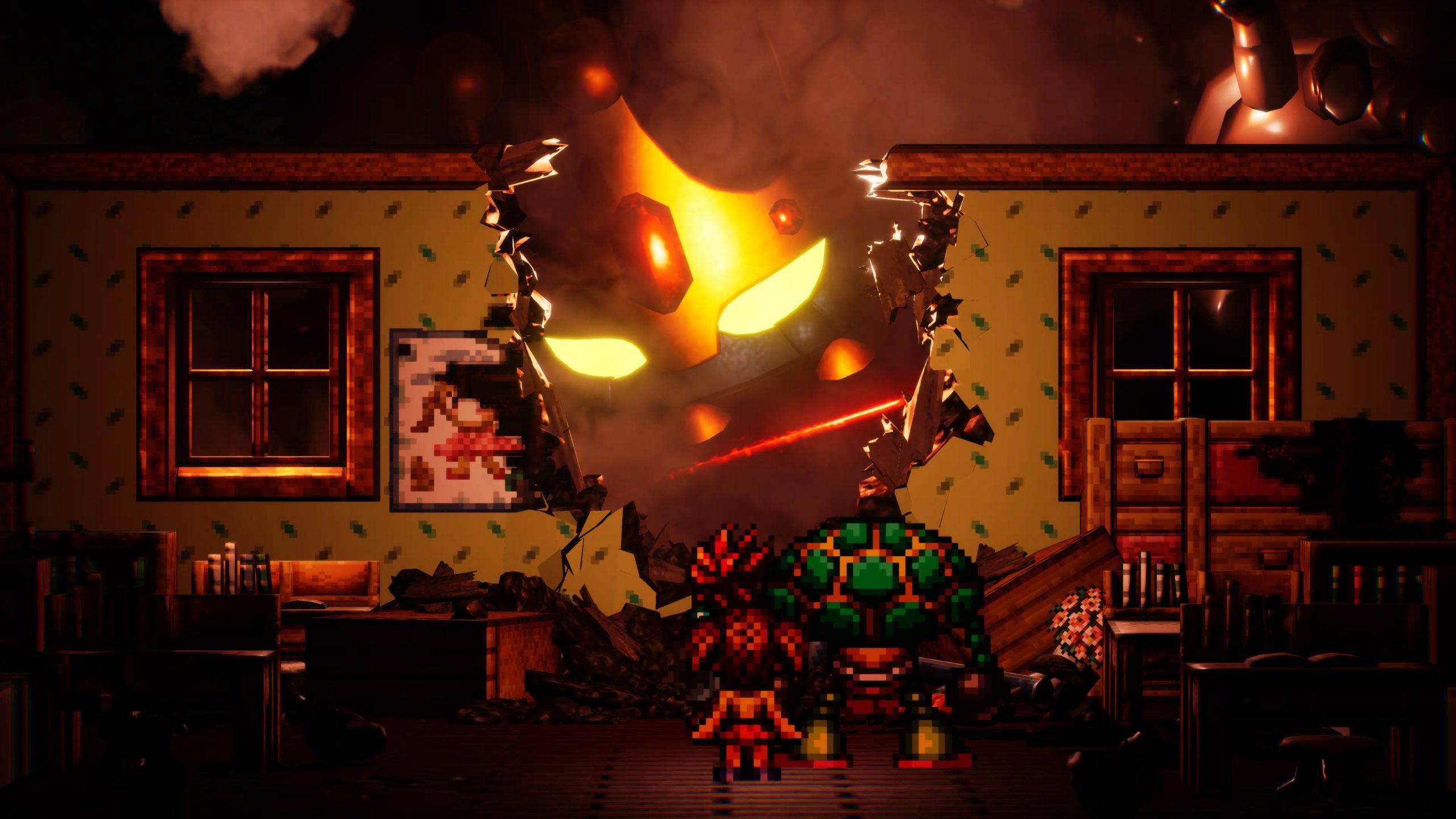
Other chapters aren’t as grandiose, but it’s not necessarily a feature you miss during your time. Taking the epic scale of an open world away created a more succinct experience. Whilst I probably clocked in close to 30 hours to experience all the endings, secret bosses and late-game puzzles, a casual playthrough will probably take about 20 hours.
This might feel short compared to other RPGs but it felt a lot less daunting of a task. Knowing I could experience everything and not have to carve out 100+ hours to do so makes the game pack a punch as there’s nothing bloating the game. Having this efficiency paired with the remake’s audio and visuals, it’s hard to not love just what this game goes for in its relatively short runtime.
Still Alive
HD-2D as a design choice has proven itself to be a near-perfect avenue for both new and old pixel art RPGs. It renews the pixel art sprites of the old SNES titles whilst simultaneously taking advantage of modern console hardware to create atmospheric and often-times beautiful environments. With dynamic lighting effects, environmental detail and brand new pixel art style characters – Live A Live really takes full advantage of this trend.
Everything graphically has been redesigned in the game. The remake has kept all the characteristics of each character whilst giving them a whole new coat of paint with a world that feels fully realised now. Enemy designs and more specifically the bosses have extremely intricate and intimidating designs.
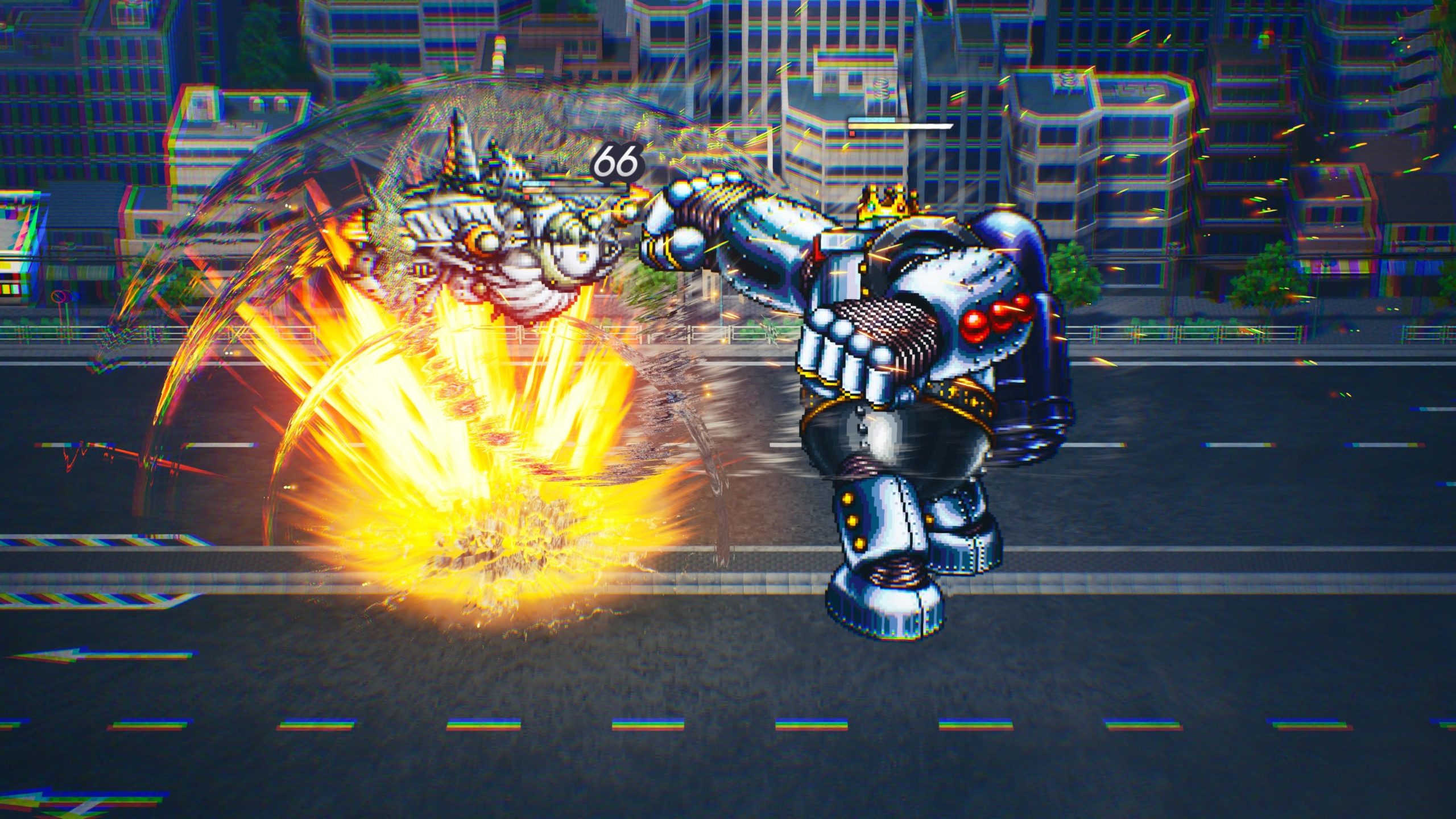
It’s the perfect way to keep the classic RPG style but bring it to modern consoles. This is further enhanced as the PS5 version makes everything even more crisp compared to the Switch. Running at a smooth 60fps with an overall high fidelity really compliments what the game has gone for visually.
On the soundtrack side, Yoko Shimomura has returned to orchestrate and arrange after doing the original score for the game. Each chapter has its own music befitting of the time period and they’re all earworms. The standout overall has to be the main theme though, for a while you’ll only hear it as you boot up the game, but when you’re in the later stages of your playthrough the epic swells of brass instruments kick into gear when you’re in battle really elevating everything. It’s impressive just how much music and how varied it all is spanning across genres whilst maintaining cohesion makes Live A Live just that extra bit special of a title.
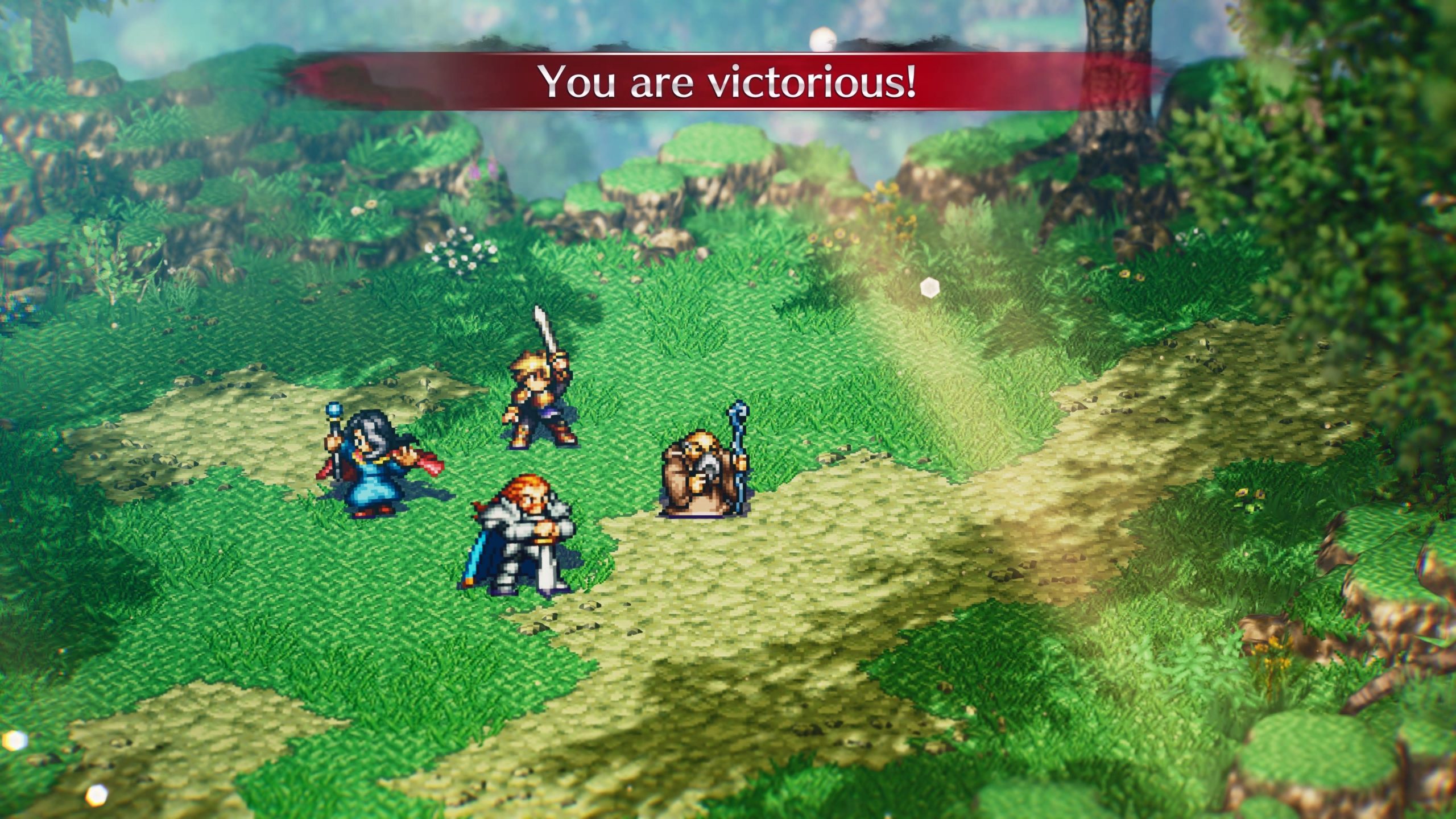
Running Out of Time
Time has been a core theme for the game, even now more so than ever being an almost 30-year-old game brought back through a remake. Live A Live shows its age a little bit when it comes to some of the basic elements of the game i.e. the combat and to an extent the dialogue. However, when the conversation comes up on what should or shouldn’t be remade, this game is unequivocally in the former camp.
It’s definitely pretentious if I was to call Live A Live not old but vintage, but the game speaks for itself. To be a game so ahead of its time that the overall package of a remake decades later is still great alongside its contemporaries is not a pleasure every game has.
Live A Live is by no means perfect, the story is inconsistent at times, even a little basic. Combat is fun and engaging, yet simple and exploitable. And whilst I felt the pacing to be askew, it pays off immensely in the end. Despite my gripes, I would recommend this to anyone who loves RPGs, especially if you like the classics.
Live A Live makes an impressive case as to why classic RPGs are not to be forgotten in time. The vignette style of storytelling brings an epic scale to an otherwise modest and sometimes unevenly paced narrative. The HD-2D visuals and recomposed soundtrack are standouts in what is already a stellar package that all RPG fans need to play.

Live A Live is out now for PlayStation 5 (review platform), PlayStation 4, Nintendo Switch and PC via Steam.
Developer: Square Enix
Publisher: Square Enix
Disclaimer: In order to complete this review, we were provided with a promotional code from the publisher. For our full review policy, please go here. If you enjoyed this article or any more of our content, please consider our Patreon.
Make sure to follow Finger Guns on our social channels. Twitter, Facebook, Twitch, Spotify or Apple Podcasts – to keep up to date on our news, reviews and features.
